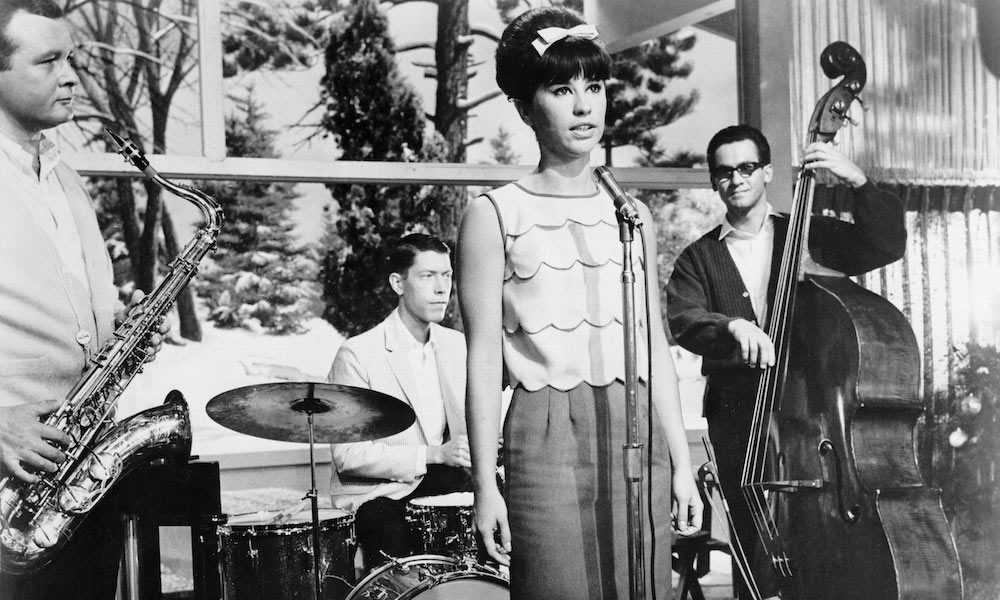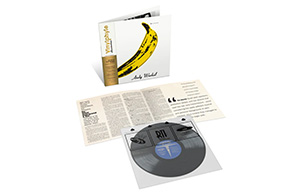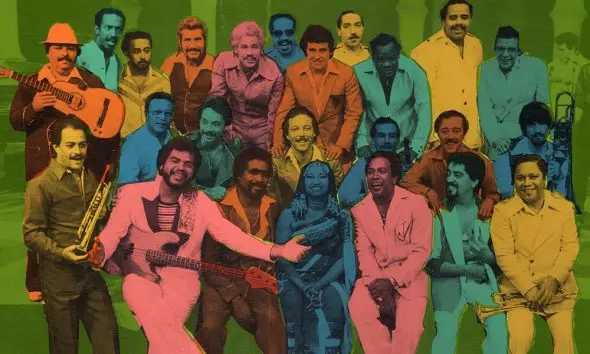Why Astrud Gilberto Is So Much More Than ‘The Girl From Ipanema’
A pioneering bossa nova singer, Astrud Gilberto made her name with ‘The Girl From Ipanema,’ but she has had a long and varied career.

The song “The Girl From Ipanema” sold nearly five million copies worldwide, helped introduce bossa nova to the world beyond Brazil, and made a star of 24-year-old singer Astrud Gilberto when it was released as a single by Verve Records in May 1964.
Gilberto, who was born on March 29, 1940, was not actually from Ipanema. She was born in Salvador, Bahia, in north-eastern Brazil, the daughter of Evangelina, a Brazilian, and Fritz, an immigrant professor. They named their daughter Astrud, after a goddess from Fritz’s native Germany. Fritz Weinert taught languages, and Astrud grew up to be fluent in Japanese, French, Italian, Spanish, Portuguese, and English.
“In my mid-teens I was part of a gang of youngsters who were involved with music,” she recalled in 1981. “Through them, I met João Gilberto, who invented the concept of bossa nova. We were married, and I sang at home with João and did a couple of college concerts with him as a special guest.”
“Today there will be a surprise for you”
Astrud Gilberto’s life changed forever in March 1963 when she accompanied João to A&R Studios in Manhattan while he recorded the album Getz/Gilberto with the renowned jazz saxophonist Stan Getz. They were about to create one of the biggest-selling jazz albums of all time, a record that turned millions of people on to jazz and the rhythms of Brazil. Getz/Gilberto stayed in the album charts for 96 weeks and, in 1965, won Grammy awards for Album Of The Year, Best Jazz Instrumental Album, Individual Or Group and Best Engineered Recording – Non-Classical. “The Girl From Ipanema” also won Record Of The Year.
Antônio Carlos Jobim played piano on the album, as well as being the musical director and composing the music for eight of its songs, including “The Girl from Ipanema.” Astrud recalled that, just before the first rehearsal, her husband told her cryptically that “today there will be a surprise for you.” At the studio, the guitarist turned to Getz and said, “Tomorrow Astrud will sing on record… what do you think?” Getz agreed to give that a try.
The first voice heard on the famous song was Gilberto’s, as he sang Vinícius De Moraes’ Portuguese lyrics, while gently strumming his guitar. This was followed by Astrud, singing her celebrated verses in English: “Tall and tanned and young and lovely/The girl from Ipanema goes walking/And when she passes, each one she passes goes, ‘Ah’.”
“I knew the song was going to be an absolute smash”
Her beguiling voice had a powerful allure for the public, who loved the fresh and sensual way she sang about the song’s protagonist, a “beautiful, beautiful girl” called Helô Pinheiro, a teenager whom Jobim and De Moraes used to watch on Ipanema beach while they drank at the Veloso Bar.
The experienced producer Creed Taylor, the man who had signed John Coltrane for Impulse! Records in 1960 and who oversaw Verve albums by Wes Montgomery, Jimmy Smith, and Cal Tjader, knew they had captured something special from the young singer. “The surprise was when Astrud came in with her little voice and sang with that accent,” Taylor recalled. “I knew the song was going to be an absolute smash.”
As well as singing on “The Girl From Ipanema,” Astrud Gilberto was also the vocalist for the song “Corcovado” (“Quiet Nights Of Quiet Stars”), which features some enchantingly delicate accompaniment from Jobim and a brilliant solo from Getz. “The Girl From Ipanema” gained Astrud fans throughout the world – her songs have been chosen for the BBC radio show Desert Island Discs by people as diverse as writers JG Ballard and Haruki Murakami, comedian Paul Merton and the late England football manager Bobby Robson.
“They resorted to lying!”
One of the problems with the history of “The Girl From Ipanema” is that Getz gave a misleading, sexist interview to the UK magazine Jazz Professional in 1966, claiming credit for Gilberto’s success. “When I first heard Astrud, I thought there was something innocent and demure in her voice – such an opposite to these chesty-voiced girls singing rock’n’roll,” Getz told interviewer Les Tomkins. “It was like a breath of fresh air. I was doing an album with her husband, João, who I love – he’s a genius. She was just a housewife then, and I put her on that record because I wanted ‘The Girl From Ipanema’ sung in English – which João couldn’t do. ‘Ipanema’ was a hit and that was a lucky break for her.”
Getz’s boast, and condescending “housewife” remark, still rankled with Gilberto nearly two decades later: “The funny thing is that after my success, stories abound as to Stan Getz or Creed Taylor having ‘discovered me,’ when in fact, nothing is further from the truth. I guess it made them look ‘important’ to have been the one that had the ‘wisdom’ to recognize talent or ‘potential’ in my singing… I suppose I should feel flattered by the importance that they lend to this, but I can’t help but feel annoyed at the fact that they resorted to lying!”
In fact, the young Astrud had grown up steeped in music. Her mother, a teacher, sang and played the violin and the Brazilian banjo-like instrument called the bandolim. Astrud’s sisters, Iduna and Edda, also played the piano. She was close friends with musicians throughout her teenage years, hanging out with songwriters Carlos Lyra, Oscar Castro Neves, Roberto Menescal, and Ronaldo Boscoli. Another friend, singer Nara Leão, introduced her to João Gilberto. In 1959, aged 19, Astrud married the 28-year-old guitarist, who became an early mentor. She sang regularly with her husband and his friends over the next three years and had even performed in public at the Faculdade De Arquitetura, part of one of Rio De Janeiro’s top universities, in a prestigious concert.
Her rise to stardom was so quick that she was signed up to perform her hit song – wearing a pale-blue sundress with matching bow – in the December 1964 MGM film Get Yourself A College Girl, appearing alongside The Animals, The Dave Clark Five, and jazz organ great Jimmy Smith, in a college romance movie directed by Sidney Miller, a man who went on to direct the hit television show Bewitched. The success of Getz/Gilberto made her a hot property and led to an appearance at the Cafe Au Go Go in Greenwich Village, in a group led by Getz.
Gilberto looked back on this period with deep regret. She admitted she was “naive and frightened” and unhappy at the lack of credit for production work she received for later albums. She was financially exploited and admitted, sadly, that she had “lacked guidance.”
“I was coping with being on my own for the first time”
Her fame brought unfair criticism from journalists back home. “Many established Brazilian musicians never accepted Astrud’s success. They portrayed her as lucky rather than talented, in the right place at the right time,” said music writer Bryan McCann in his book Getz/Gilberto. She later confessed she was “very hurt” by the “harsh criticism and unwarranted sarcasm” she received from reporters in her homeland. Newspapers publicized rumors that she was involved in a romantic liaison with Getz. She never sang again in Brazil and was not present when “The Girl From Ipanema” was used in the opening ceremony of the 2016 Rio Olympics.
One of the reasons Astrud toured with Getz as a “special guest vocalist” for the following six months was that she was separating from her husband – they divorced and he quickly remarried, to a singer called Heloisa Maria Buarque De Hollanda – and needed financial security. She came to regret signing a contract that paid a “slave salary.” She needed money to support her son Marcelo. “Very difficult times,” she said in 2002. “Besides being in the midst of a separation and dealing with the responsibilities of being a single mother and a brand new demanding career, I was also coping with being on my own for the first time in my life, in a foreign country, traveling with a child, having financial difficulties… and, of course, sadly, totally naïve and unprepared to deal with the ‘wolves posing as sheep.’”
Marcelo Gilberto later became a talented bass player himself, joining her group in the early 80s, and also playing the role of her manager and “guardian.” Another son, Gregory Lasorsa – fathered by Astrud’s second husband – is a guitarist who has also recorded with his mother and half-brother, on the song “Beautiful You” from the 1997 album Temperance.
“A highlight of my career”
When she parted from Getz, Astrud Gilberto finally got the chance to take charge of her own career. She said she “never looked back.” Her first solo concert with her own group actually took place in London, in 1965, at a new club called The Cool Elephant. It was a fashionable nightspot in Mayfair in which Princess Margaret and Dudley Moore, Peter Sellers, and Britt Ekland hung out – and a place where visiting American stars such as Mel Tormé sang.
Gilberto had always been into jazz – she grew up listening to Chet Baker, Duke Ellington, and Gerry Mulligan – and got one immediate boost in her post-Getz career with the chance to sing alongside trumpeter Baker (“an idol”) at a jazz club in San Francisco. Baker suddenly announced that there was “a very special young lady” in the audience – and invited Astrud up to join him for a duet. They ended up performing a bossa nova version of “Fly Me To The Moon.” The pair collaborated again in 1977, on a version of a song she had written called “Far Away.” She called the experience “a highlight of my career.”
She was never comfortable being labeled a jazz singer, though. “What is a jazz singer?” she remarked to The New York Times in 1981. “Somebody who improvises? But I don’t: I prefer simplicity. I’ve been told that my phrasing is jazz-influenced. My early albums were recorded for a jazz label, Verve. My first record was with Stan Getz. And I did an album with Gil Evans. So I guess that’s where the jazz idea comes from. But I’m not a pure jazz singer.”
Astrud made eight fine albums for Verve – The Shadow Of Your Smile and The Astrud Gilberto Album (both 1965); A Certain Smile, A Certain Sadness, with Walter Wanderley, and Look To The Rainbow (both 1966); Beach Samba (1967); Windy (1968); I Haven’t Got Anything Better To Do and September 17, 1969 (both 1969) – before she moved on to other projects.
Among her interesting work after leaving Verve was the 1971 album Gilberto With Turrentine, a collaboration with the brilliant jazz saxophonist Stanley Turrentine, and Plus, made with James Last and recorded for Polydor in 1986. One of the most high-profile recordings of her latter-day career was with pop star George Michael, who had admired her album with Last. A friend told her that Michael loved her singing, but at the time she did not know anything about the former Wham! star. She sent Michael a Western Union telegram and he came to hear her sing at Madison Square Garden in New York. In 1996, they reconnected when Michael asked her to perform on a charity record for AIDS research. They recorded a lovely version of “Desafinado” in London.
“Being close to the public was frightening”
As the 20th century ended, Gilberto began slowing down her live performance commitments – she said she always found that being “close to the public was frightening” – and moved to Philadelphia with her new husband, though they later separated. She grew interested in philosophy and was particularly enamored of Wayne Dyer’s self-help book Your Erroneous Zones, describing it as “a life-saving device.”
Astrud Gilberto’s father had been a passionate artist – he painted with oils on canvas – and his daughter followed in his artistic steps, making her own computer-generated works such as Digital Babe, or creating original acrylic-on-canvas paintings such as King Of The Jungle. After announcing, in 2002, that she was taking “indefinite time off” from public performances, she has spent much of her time campaigning against cruelty to animals. The singer has not been forgotten by music fans, however. In January 2020, Gilberto appeared in an NPR list of women who deserve to be in the Rock And Roll Hall Of Fame.
Though “The Girl from Ipanema” has been covered hundreds of times, including by Frank Sinatra, Amy Winehouse, and Madonna – and has even been sent up as an elevator muzak-style instrumental in John Landis’ comedy masterpiece The Blues Brothers – there is no doubt that the unbeatable version of this classic 60s song is the one featuring Astrud Gilberto. When she was asked “What are the best things in the world?” she replied with characteristic simplicity: “That’s an easy one… children, animals, and music.”
Looking for more? Discover the history of bossa nova music, Brazil’s quiet revolution.












Norman F Labayen
March 30, 2021 at 4:50 am
She is one of my all time favorite. Went to see her perform at the village nyc in the 80’s and I am big fan… I think she’s a great artist and contributed well in the music industry… Job well done Astrud!!!
Yosi Issin
July 6, 2021 at 7:15 am
Her music was brought to me by my wife. Since then Astrud has been one of my favorite artists. (From Bulgaria)
Darren
March 29, 2022 at 1:22 pm
Geddy Lee of RUSH played a short instrumental passage of ‘The Girl from Ipanema’ on bass during an interlude on the band’s song ‘La Villa Strangiato’. This can be heard on the band’s 2003 live album and concert DVD Rush In Rio.
Marco Romano
March 30, 2022 at 1:32 pm
She made very little money from the Getz Gilberto album while Stan Getz made a tidy sum.
Jorge García
April 5, 2022 at 5:03 pm
Puedo pasar horas y horas escuchando la voz de Astrud. En realidad sus canciones son un bálsamo en mi vida, gracias Astrud por deleitarme con su preciosa voz.
Anna Acevedo Lyman
April 20, 2022 at 3:56 am
I love Astrud’s voice. While several are responsible for creating Bossa Nova, and particularly her first husband, she seems like the personifying spirit behind the whole Bossa Nova movement. Bossa speaks from the soul. It is anti-artifice, natural and real.
Fabrizio
March 29, 2023 at 2:25 pm
Astrud is a genius, I love hearing his voice. A few years ago I bought the Getz/Gilberto album (I imported it because I couldn’t find it in Brazil) and I was fascinated to hear Astrud’s voice. I bought The Genius of Astrud Gilberto (also imported) a month ago and it is a masterpiece. I plan to buy her others. Thank you UDiscoverMusic for bringing us a little bit of this story, little known to us Brazilians.